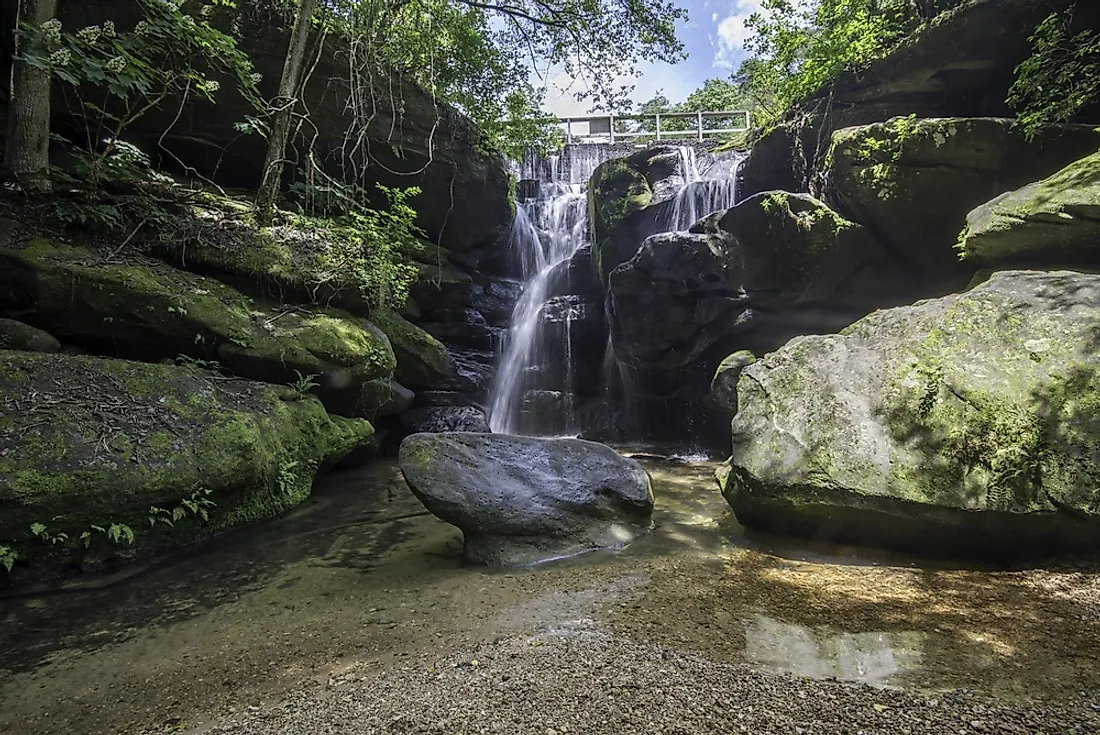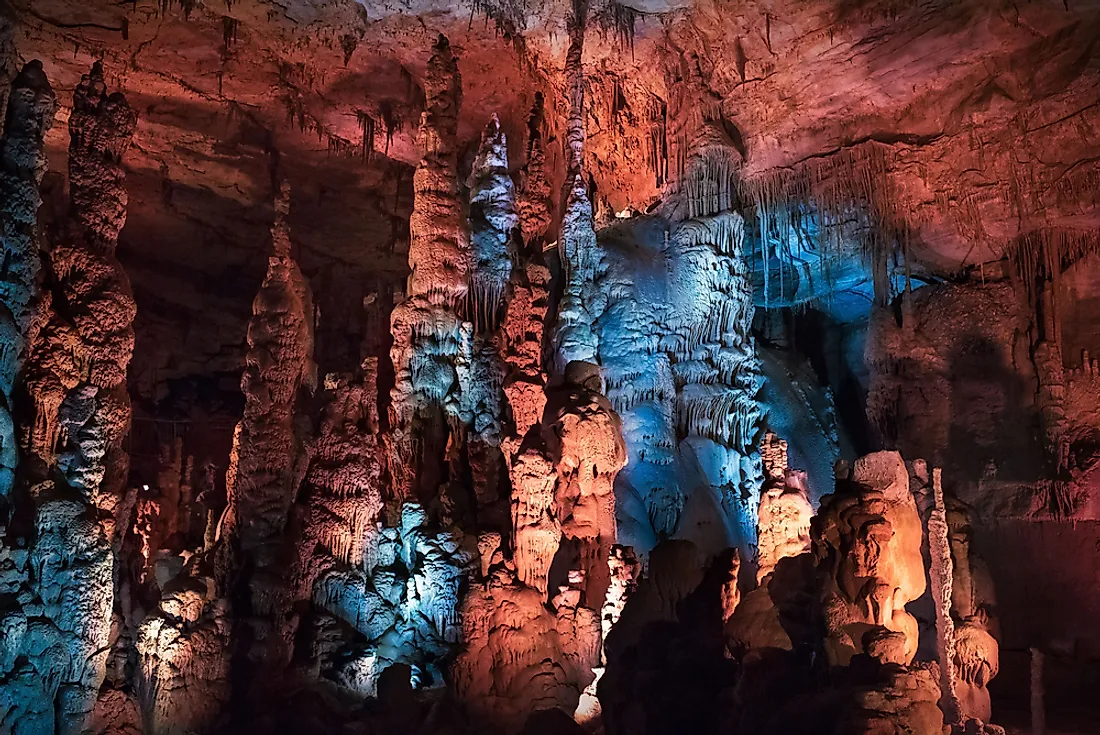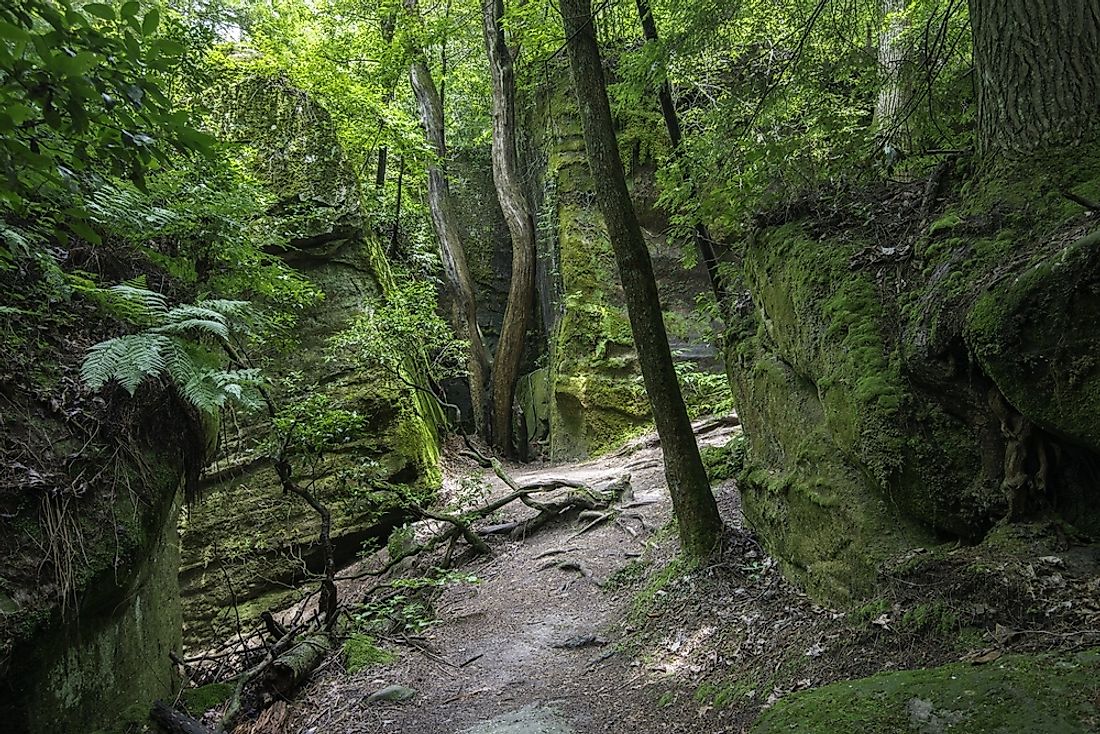The 7 National Natural Landmarks of Alabama

The United States National Natural Landmarks (NNL) is a program that identifies and encourages the management, conservation, and rehabilitation of natural history in the US. The program identifies the geological and biological features in private and public ownership. The main aim of the program is to encourage and support individual and organization efforts in preserving sites that illustrate the ecological and geological history of the country. The program also seeks to encourage the public to appreciate natural heritage. There are 599 national natural landmarks in the country spread across 48 states, and the territories of Virgin Islands, Puerto Rico, Guam, and American Samoa. Delaware and Louisiana are the only states without a national natural landmark. The federal, state, county, or municipal governments manage about one-half of the landmark sites. One-third is privately owned while the rest is owned and managed by a public-private cooperation. A site qualifies as NNL because it contains the remnants of a specific geological, ecological, or biological feature. Designated NNLs include terrestrial and aquatic ecosystem, geological landforms and processes, and historical record on geologic processes. There are seven NNL sites within the state of Alabama, which include cave ecosystems, karst topography, and wetlands. The seven were designated between 1971 and 1987. They vary in size ranging from 2 acres to 185,000 acres.
7. Shelta Cave
The Shelta Cave is an underground cave system and lake in Madison County. The 2,500-foot-long cave developed in Warsaw Limestone of the Mississippian Age. It is among the most biodiverse caves in the Appalachian Mountain due to its complex aquatic fauna including species that only exist in the cave, such as the Shelta cave crayfish. The privately owned landmark was designated in 1971. Entrance to the site is limited during certain times of the year to minimize human contamination and pollution. In the early 1900s, the cave acted as an underground bar and dancehall.
6. Cathedral Caverns

The Cathedral Caverns are located within the Cathedral Caverns State Park in Marshall County. The caverns consist of a series of cave systems with large chambers containing underground streams. Decorative speleothems including, totem poles, dripstone walls, and stalagmites are found in the caves. It is a state-owned NNL covering an area of 161 acres. The cavern was previously known as Bat Cave it but was renamed Cathedral Caverns due to its cathedral-like appearance. Jacob Gurley who open it to the public in the 1950s was the initial owner. In 1987, it was bought by the government and opened in 2000 as a state park. School students, church group, and hiking teams are the frequent visitors.
5. Newsome Sinks Karst Area
The Newsome Sinks Karst Area is a privately owned NNL in Morgan County. The landmark occupies a karst valley drainage basin that is 4 miles long, three-quarters mile wide and 400ft deep. Both ends of the drainage basin are elevated than the valley floor, and water has to escape through the subterranean passageways. The landmark sits on a 1,396- acre piece of land and was designated in 1973. It was named after William Newsome who settled on the land in 1838.
4. Beaverdam Creek Swamp
The Beaverdam Creek Swamp is found In Limestone County. The swamp lies within the Wheeler National Wildlife Refuge and is owned by the federal government. It covers an area of 508 acres and was designated as a National Natural Landmark in 1974. Swamps are common in the United States, they are normally found south in the Gulf Coastal Plain, but the Beaverdam Creek Swamp is found in the Interior Low Plateaus.
3. Dismals

The Dismals is a moist sandstorm canyon In Franklin County. It is a privately owned NNL that sits on a 75-acre piece of land. The gorge site contains a variety of native plants including tulip poplar, beech, and sweetgum. Blocks of sandstone lie randomly on the floor creating damp rockface microhabitats and natural bridges. It is among the few places where the glowing dismalites insects are found in the country. There are two waterfalls in the canal; Rainbow Falls and Secret Falls. There are also six natural bridges.
2. Mobile-Tensaw River Bottomlands
The Mobile-Tensaw River Bottomlands is among the essential wetlands in the United States. The site contains freshwater swamps, floodplains, and brackish water marshes. The bottomlands support a variety of endangered species. It was designated a National Natural Landmark in 1974 and covers 179,000 acres. It is owned by the Federal, state, and private investors. It is part of the Mobile-Tensaw River Delta located in a river valley that began forming millions of years ago.
1. Red Mountain Expressway Cut
The Red Mountain Expressway Cut in Jefferson County is the section of the Red Mountain that was blasted to make way for the construction of the Red Mountain Expressway that allows access to downtown Birmingham, Homewood, Vestavia Hills and Mountain Brook. The section exposes geological strata that span millions of years. The cut shows an unusual combination of structural features and records the geological development of the region during the Paleozoic time. It is owned by the municipal government and was designated in 1987.
The 7 National Natural Landmarks of Alabama
| Rank | Name | Date | County | Ownership |
|---|---|---|---|---|
| 1 | Shelta Cave | 1971 | Madison | Private |
| 2 | Cathedral Caverns | 1972 | Jackson | State |
| 3 | Newsome Sinks Karst Area | 1973 | Morgan | Private |
| 4 | Beaverdam Creek Swamp | 1974 | Limestone | Federal |
| 5 | Dismals Canyon | 1974 | Franklin | Private |
| 6 | Mobile Tensaw River Bottom Lands | 1974 | Baldwin, Mobile, Washington | Federal, State, Private |
| 7 | Red Mountain Expressway Cut | 1987 | Jefferson | Municipal |











